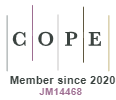The Regionalization of Tomography and Magnetic Resonance Imaging in the State of Pernambuco in 2008 and 2012
DOI:
https://doi.org/10.5585/rgss.v4i2.135Keywords:
Unified Health System. Regional Health Planning.Tomography.Magnetic Resonance Imaging.Abstract
The broadening access to health services reinforces the challenge of ensuring medium and high complexity support to the population, due to various difficulties, in particular the enormous concentration of these services in a few cities, and even the complete absence of certain services of high complexity in different regions. In this sense, this article aims to analyze the process of regionalization of high complexity exams – Tomography and Magnetic Resonance Imaging - in the state of Pernambuco in 2008 and 2012. An ecological descriptive study was conducted using secondary data sources from information systems in health national basis. One has found out an increased supply of CT scans and magnetic resonance imaging in towns of the state (148.7%) compared to 1st Health Region (62.9%) from 2008 to 2012. In addition, one has observed a significant (p <0.001) concerning to examinations/10.000hab in seven health regions in the state of PE, reduced invasion in 1st Health Region and reduced dropout rates in other regions. In spite of the evidence, the offer has not been devolved in some regions, requiring investment of the State government in this action.Downloads
Downloads
Published
How to Cite
Issue
Section
License
Copyright (c) 2019 Revista de Gestão em Sistemas de Saúde – RGSS

This work is licensed under a Creative Commons Attribution-NonCommercial-NoDerivatives 4.0 International License.
Autores mantém os direitos autorais e concedem à revista o direito de primeira publicação, com o trabalho simultaneamente licenciado sob a Creative Commons Atribuição - Não comercial - Compartilhar igual 4.0 Internacional que permite o compartilhamento do trabalho com reconhecimento da autoria e publicação inicial nesta revista.
Autores têm autorização para assumir contratos adicionais separadamente, para distribuição não-exclusiva da versão do trabalho publicada nesta revista (ex.: publicar em repositório institucional ou como capítulo de livro), com reconhecimento de autoria e publicação inicial nesta revista.
Autores têm permissão e são estimulados a publicar e distribuir seu trabalho online (ex.: em repositórios institucionais ou na sua página pessoal) a qualquer ponto antes ou durante o processo editorial, já que isso pode gerar alterações produtivas, bem como aumentar o impacto e a citação do trabalho publicado (Veja O Efeito do Acesso Livre) em http://opcit.eprints.org/oacitation-biblio.html
- Abstract 220
- PDF (Português (Brasil)) 121




